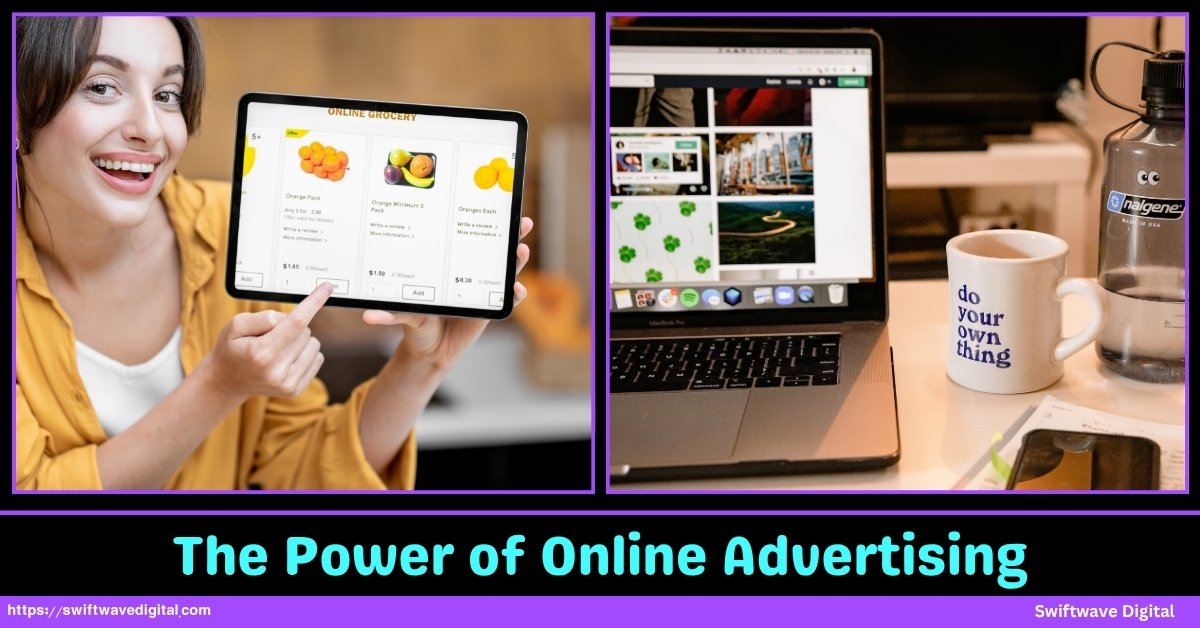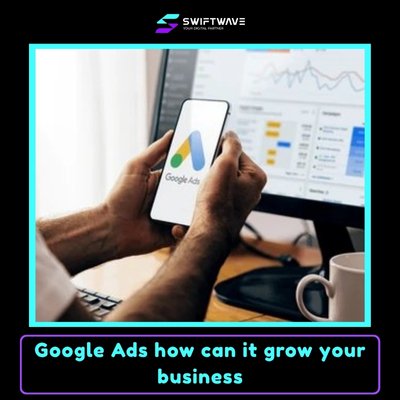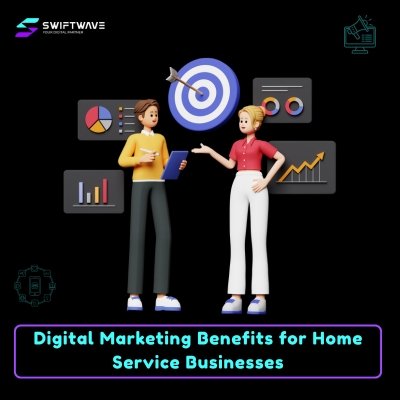Online Advertising has completely changed how businesses attract, engage, and convert customers in the modern digital era. Instead of relying on traditional marketing like print or TV, brands now reach people where they spend most of their time online.
With billions of active internet users scrolling, searching, and shopping daily, online ads give businesses the power to target precise audiences, track performance, and scale campaigns instantly.
Whether it’s through Google, Meta, or YouTube, every platform offers measurable results and real-time control over marketing performance.
From small startups to global brands, everyone now competes on the same digital field — and the smartest strategies win.
The Power of Online Advertising
In this guide, we will explain how online advertising works, why it’s effective, and how businesses can use it to drive measurable growth.
Digital Reality We Live In
Online advertising has become the backbone of modern marketing. In 2025, the average person spends nearly 7 hours per day online, switching between social media, search engines, and video platforms.
With over 5 billion internet users worldwide, the web isn’t just a place to browse — it’s where people make decisions, form opinions, and buy products.
Businesses that once relied on physical stores or word-of-mouth now depend on digital visibility. The reality is simple: if your audience spends most of their time online, your business should too.
Whether it’s a small bakery, a freelancer, or a large brand, the internet levels the playing field by giving everyone access to the same digital platforms.
Traditional marketing like billboards, flyers, or TV ads can’t match the reach and precision of online ads.
A single campaign on Google or Facebook can reach thousands within hours, while also tracking every impression, click, and conversion. Attention is the new currency — and online advertising helps you earn it.
Why Online Advertising Works
Online advertising works because it connects directly with user intent and behavior. Unlike mass marketing, digital campaigns are data-driven and target people who are already interested in your product or service.
The power lies in precision targeting. Platforms like Google Ads, Meta Ads, and LinkedIn allow you to reach audiences based on demographics, interests, behaviors, and even recent searches.
You don’t waste money showing ads to people who don’t care — you focus only on those who do.
Another reason it works is real-time performance tracking. Traditional ads leave you guessing about results. Online advertising tells you exactly how many people viewed, clicked, and converted from your ad.
This allows businesses to make smarter, data-backed decisions. If something isn’t performing well, you can pause it instantly, change the image, adjust the headline, or refine the target — and the effects are immediate.
Finally, online advertising offers cost efficiency. A small business with a limited budget can still compete with larger brands because digital ads allow flexible spending.
You can start with as little as a few dollars per day, test campaigns, and scale gradually based on performance. This makes online advertising accessible and powerful for everyone.
What Online Advertising Can Do for Businesses
The biggest advantage of online advertising is its ability to turn visibility into measurable results. Businesses can use it to build awareness, generate leads, and increase sales — all through one connected strategy.
For awareness, online ads help brands reach new audiences quickly. Repetition plays a key role here. When people repeatedly see your brand name or logo while scrolling or searching, they remember it. This builds brand recall, which is critical when customers are ready to make a purchase.
For engagement and conversions, online ads allow direct communication. Through video ads, carousel formats, or search campaigns, you can demonstrate value, answer questions, and lead users straight to your product pages or chat systems.
Most importantly, online advertising helps create sustainable growth. By collecting insights from each campaign — who clicked, what they viewed, when they purchased — you build a feedback loop.
Every campaign teaches you something new about your customers. Over time, your ads become more accurate, your costs drop, and your sales rise. That’s the compounding effect of digital advertising done right.
Data Behind the Power
Numbers make the truth clear. Global digital ad spending surpassed $600 billion in 2025 (Statista), proving how central online advertising has become to global business strategy.
Google reports that businesses earn an average of $8 in profit for every $1 spent on Google Ads, showing the high return potential.
On Meta platforms like Facebook and Instagram, more than 2 billion people view ads every month. With such massive reach, even a small audience segment can translate into thousands of impressions.
Additionally, research shows that retargeted ads — ads shown to users who’ve interacted with your website or content before — are 70% more likely to convert than ads targeting new users.
Video content also plays a big role. According to Wyzowl, including video in ads can boost conversion rates by over 30% because motion, voice, and visuals capture attention better than static posts.
And with over 92% of users accessing the internet through mobile devices, online advertising has become a mobile-first strategy, ensuring your message appears wherever your customer goes.
These statistics prove one point: digital advertising delivers measurable results. It doesn’t rely on assumptions — it operates on clear, trackable performance metrics.
Challenges (and Why They’re Worth It)
No marketing channel is perfect, and online advertising comes with its own challenges. One major issue is ad fatigue — when users see the same ad too often and stop paying attention.
Another challenge is rising competition, which increases ad costs in saturated industries. And sometimes, campaigns fail simply because of weak targeting or poor creative execution.
However, the reason these challenges are worth facing is that they’re fixable — fast. In traditional media, once a billboard or TV ad runs, you can’t change it.
In digital, you can pause underperforming campaigns, adjust your ad copy, change the visuals, and test new audiences instantly. Every click and impression gives you feedback that can improve your next move.
Platforms also provide built-in optimization tools powered by AI, such as Google’s Performance Max or Meta’s Advantage+ campaigns.
These systems automatically adjust bids, placements, and creative combinations based on performance data. So even if you’re not an expert, you can still achieve good results with structured testing and learning.
The key is consistency. Online advertising rewards brands that continuously refine their strategy, learn from analytics, and adapt to changing audience behavior.
What Businesses Should Do Now
To make online advertising work, businesses need a structured approach — not random boosting or guesswork. The first step is defining your objective. Every campaign should have one clear goal: awareness, leads, or sales. Without a goal, you can’t measure success.
Next, focus on understanding your audience. Gather insights from your website, CRM, or past campaigns. Know who your customers are, what problems they want solved, and which platforms they use most. This information helps create accurate targeting and relevant messaging.
Then, choose the right platforms. Use Google Ads if your audience searches for your product actively. Use Meta Ads (Facebook and Instagram) for visual storytelling and retargeting.
For B2B audiences, LinkedIn Ads are effective. If you want to engage through short videos, explore YouTube and TikTok. Don’t spread across every channel — pick the few that align with your business and audience.
Once your campaign starts, focus on testing and optimization. Create multiple ad versions to test different headlines, visuals, and calls to action. Monitor key metrics such as CTR (click-through rate), conversion rate, and cost per acquisition. Stop what’s not working and scale what is.
Finally, build retargeting loops. Most customers don’t buy the first time they see your ad. Retarget them with reminders, testimonials, or limited-time offers. This approach increases conversions and ensures your marketing budget delivers consistent results.
Online advertising is not a one-time effort — it’s an ongoing process of testing, learning, and refining. Businesses that commit to this process see long-term growth, stronger brand visibility, and better ROI.
Conclusion
Online advertising is no longer optional it’s essential for growth in today’s digital-driven world. It allows businesses of all sizes to reach targeted audiences, measure every action, and scale faster than ever before.
The true strength of online advertising lies in its precision and flexibility you can adjust campaigns instantly, track real-time data, and see exactly what drives results.
Unlike traditional marketing, it’s not about guessing; it’s about testing, learning, and improving continuously. With billions of users active online daily, the opportunity to connect with potential customers has never been greater.
By using clear objectives, smart targeting, and consistent optimization, any business can turn online advertising into a powerful tool for long-term success.




